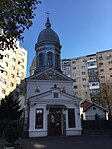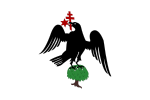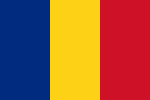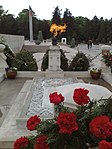Cremation in Romania
CremationDeath in Romania

The 20th century history of cremation in Romania began in 1923, when the Romanian Cremation Society, called Cenușa ("Ashes"), was formed. In February 1928, the Bucharest Crematorium, also called Cenușa, began operations. It cremated 262 corpses that year, the figure rising to 602 in 1934. In 1935, 0.19% of Romania's dead were cremated there.
Excerpt from the Wikipedia article Cremation in Romania (License: CC BY-SA 3.0, Authors, Images).Cremation in Romania
Calea Șerban Vodă, Bucharest
Geographical coordinates (GPS) Address Nearby Places Show on map
Geographical coordinates (GPS)
| Latitude | Longitude |
|---|---|
| N 44.411451383193 ° | E 26.103094766816 ° |
Address
Crematoriul Uman Cenușa
Calea Șerban Vodă
040215 Bucharest (Sector 4)
Romania
Open on Google Maps











